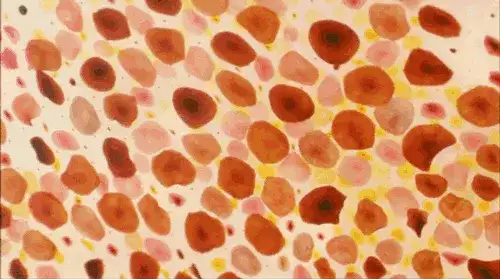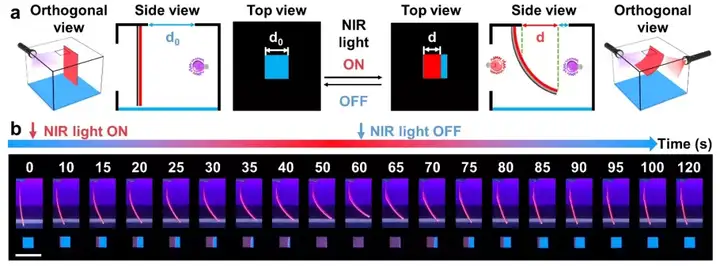Under the law of "natural selection, survival of the fittest", creatures in nature have developed many amazing special skills. Some of these "color-changing masters," such as chameleons and octopuses (Figure 1), can change their skin color in a short period of time, either by hiding in the environment to confuse predators or prey, by appearing bright and dangerous to deter intruders, and by changing stripes or spots to "talk" to their peers.
.jpg)
Picture1 Chameleons
How do these creatures manage to change color freely? In the case of octopuses, millions of red, yellow and black pigment cells are gathered in their skin. Once the surrounding environment changes, their brains will direct the muscle cells connected with these pigment cells to contract or relax, thereby controlling the exposure area of different pigment cells and adjusting their overall color to a similar color to the environment.
(Picture 2)。

Figure 2 Changes of pigment cells in octopus skin (image from the Internet)
The ability of creatures to respond the changes of environment has been in researcher’s attention for a long time. Inspired by their various exquisite color-changing mechanisms, many intelligent color-changing materials that can display specific colors or patterns under different conditions (temperature, pH, humidity, light, etc.) like creatures have come into being. It plays a great role in the fields of sensing detection, information encryption, flexible display, bionic camouflage and so on.
However, the current artificial materials are mostly achieved by introducing chromophore with stimulus response into the system, which is limited in types and difficult to synthesize, and the performance of rapid response, stable and reversible, accurate multicolor regulation is far less than that of organisms. Recently, researchers Chen Tao and Lu Wei from the Intelligent Polymer Materials Research Group of Ningbo Institute of Materials Technology and Engineering, Chinese Academy of Sciences, imitated the mechanism of octopus "using pigment cell deformation to drive skin discoloration", and reported an intelligent pattern display system modulated by "photocontrolled multi-color fluorescence gel drive", providing a new way to solve these problems.
At the heart of the system is an asymmetric near-infrared photoresponsive fluorescence driver (FIG. 3a) made of two-dimensional carbon nanotube (CNTs) films, polydimethylsiloxane (PDMS) films and polychromatic fluorescent polymer gels. When near-infrared light is irradiated on the black side of CNTs, the photothermal CNTs layer can convert light energy into heat and transfer it to the adjacent PDMS layer. At high temperatures, the PDMS layer expands with heat, causing the entire drive to spontaneously bend to one side of the multicolor fluorescent gel. After loading the deformable driver under the custom pattern display panel that is partially hollowed out, you can see that as the driver bends, the top of the device will show a simultaneous change in the fluorescent pattern (Figure 3b), which gradually changes from blue to red.

FIG. 3 Basic structure of intelligent pattern display system and photo-controlled color-changing process
Based on the above principles, we can display dynamic patterns such as seed germination (FIG. 4) and torch ignition (FIG. 5) on such intelligent fluorescent devices. For example, in Figure 4, when the near infrared light is turned off, the green fluorescence driver inside the device is in an upright state, which is in the blind area of our field of vision, and only a small yellow mound is displayed on the top of the device. After the near-infrared light is turned on, the green fluorescence driver inside the device gradually bends, thus appearing in our observation field, and the top of the device shows a green seedling breaking out of the ground. Similarly, without near-infrared light stimulation, the top of the device in Figure 5 shows a green figure holding a yellow torch. As the red fluorescent actuators stimulated by near-infrared light gradually heat up and deform, we can see the red flame gradually rising in the yellow torch.

